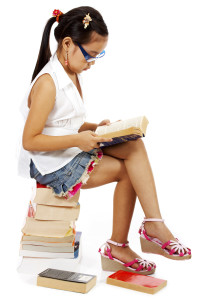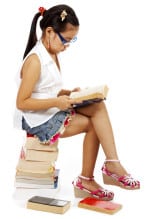 I love to read out loud to my students. The problem lies in the fact that I don’t have kindergartners anymore who truly appreciate reading aloud for the simple fact that they are being read to. There is always more ‘stuff’ to do than time to do it in our days in middle elementary, so reading aloud serves two purposes in my classroom: I can still be silly and do something I enjoy, and I’ve learned how to use it for teaching concepts.
I love to read out loud to my students. The problem lies in the fact that I don’t have kindergartners anymore who truly appreciate reading aloud for the simple fact that they are being read to. There is always more ‘stuff’ to do than time to do it in our days in middle elementary, so reading aloud serves two purposes in my classroom: I can still be silly and do something I enjoy, and I’ve learned how to use it for teaching concepts.
It’s amazing how much application can be taught, and demonstrated, out of a simple children’s book. I figured this out several years ago.
At the beginning of each year I review nouns, verbs, adjectives, adverbs and prepositional phrases. With each book I read at our morning meeting I have students write down examples of each part of speech then have them read the example to the class who could then ascertain if the example was correct or not. We then sort them into marked boxes for use later in our interactive notebooks. This gave me a good idea of who needed a bit more help with this concept and who had retained it from over the summer.
As grammar concepts snowball, so does my use for reading aloud. We add finding pronouns, proper nouns, verb tenses, plurals, singulars, objects of prepositions and so forth. Each time we read aloud I pull some sort of grammar concept into it.
As classroom demand for assessing progress increased, I tried to figure out how to juggle all that is required of me while still being true to my students. I decided that since I received such a good response for the grammar concepts, why stop there?
I began searching for other concepts I could teach and assess with such a simple tool, other than the typical character, setting and plot and thematic usage that is the usual case.
I threw in writing concepts with ‘finish the story’ assignments. Then I moved to having the kids show their understanding of informative, opinion and narrative writing. I also use these simple books to introduce different styles of writing and the different genres.
Then I brought science and social studies into the picture. Granted this requires a bit more digging in my classroom library for thematic books, but it is well worth it. Want your kids to be able to understand, and apply, all of that vocabulary they need to know? Add simple ‘picture books’ to their textbook material. Talk about being able to see who really understands what is being taught. Add that to a classroom of kids being able to help each other out and explain why an answer is or isn’t correct and I’m even able to throw some of my Marzano objectives into the mix.
Kindergarten, eat your heart out.



